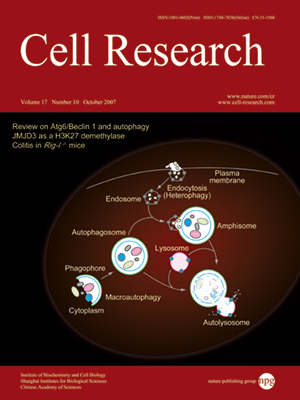
Volume 17, No 10, Oct 2007
ISSN: 1001-0602
EISSN: 1748-7838 2018
impact factor 17.848*
(Clarivate Analytics, 2019)
Volume 17 Issue 10, October 2007: 881-894
ORIGINAL ARTICLES
Genome-wide analysis of the phospholipase D family in Oryza sativa and functional characterization of PLDβ1 in seed germination
Gang Li1, Fang Lin1,2 and Hong-Wei Xue1
1National Key Laboratory of Plant Molecular Genetics, Institute of Plant Physiology and Ecology, Shanghai Institutes for Biological Sciences, Chinese Academy of Sciences, 300 Fenglin Road, Shanghai 200032, China
2Current address: Department of Pharmacology, Laboratory of Aging and Nervous Diseases, Soochow University School of Medicine, Suzhou 215123, China
Correspondence: Hong-Wei Xue(hwxue@sibs.ac.cn)
Phospholipase D (PLD) plays a critical role in plant growth and development, as well as in hormone and stress responses. PLD encoding genes constitute a large gene family that are present in higher plants. There are 12 members of the PLD family in
Arabidopsis thaliana and several of them have been functionally characterized; however, the members of the PLD family in
Oryza sativa remain to be fully described. Through genome-wide analysis, 17 PLD members found in different chromosomes have been identified in rice. Protein domain structural analysis reveals a novel subfamily, besides the C2-PLDs and PXPH-PLDs, that is present in rice – the SP-PLD. SP-PLD harbors a
signal
peptide instead of the C2 or PXPH domains at the N-terminus. Expression pattern analysis indicates that most PLD-encoding genes are differentially expressed in various tissues, or are induced by hormones or stress conditions, suggesting the involvement of PLD in multiple developmental processes. Transgenic studies have shown that the suppressed expression of rice
PLDβ1 results in reduced sensitivity to exogenous ABA during seed germination. Further analysis of the expression of ABA signaling-related genes has revealed that PLDβ1 stimulates ABA signaling by activating
SAPK, thus repressing
GAmyb expression and inhibiting seed germination.
Cell Research (2007) 17:881-894. doi: 10.1038/cr.2007.77; published online 18 September 2007
FULL TEXT | PDF
Browse 1765


